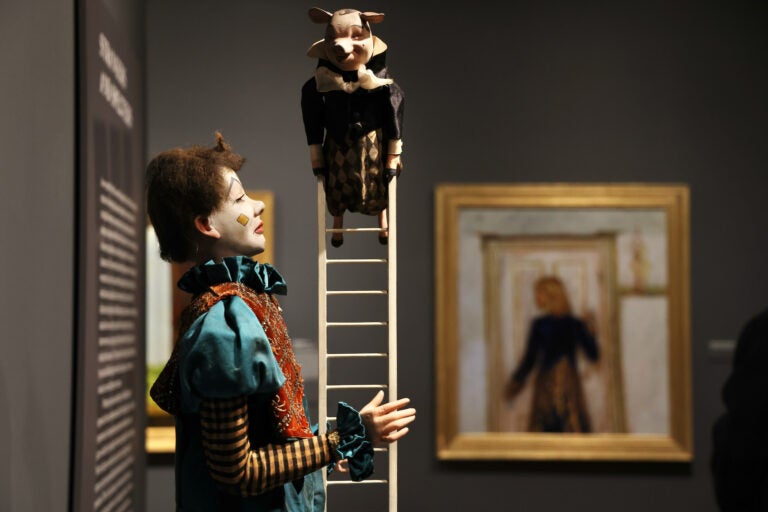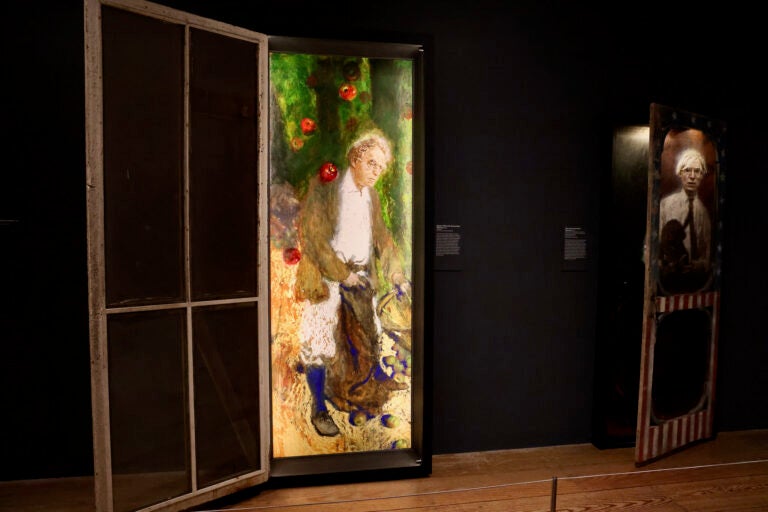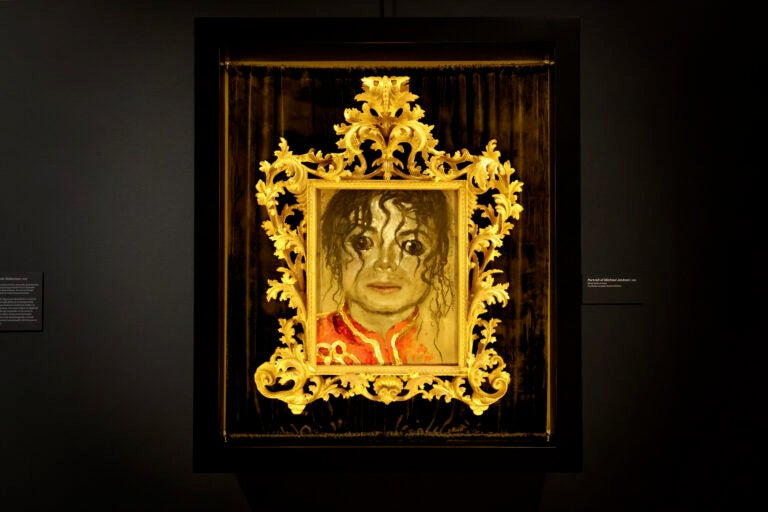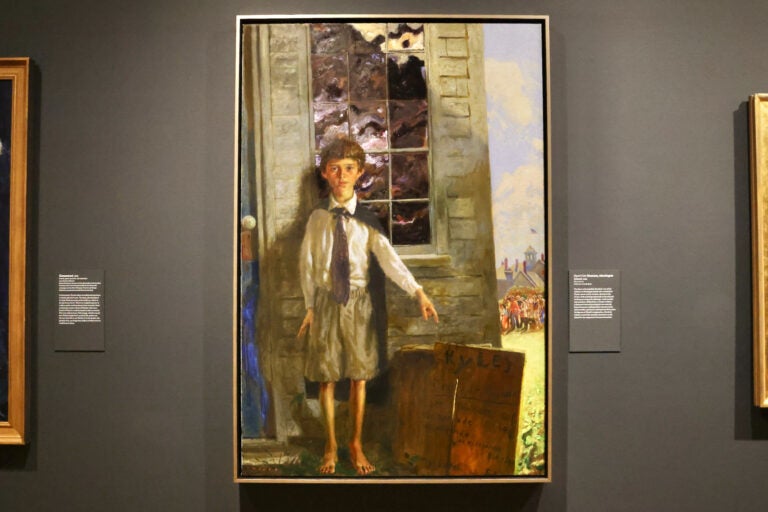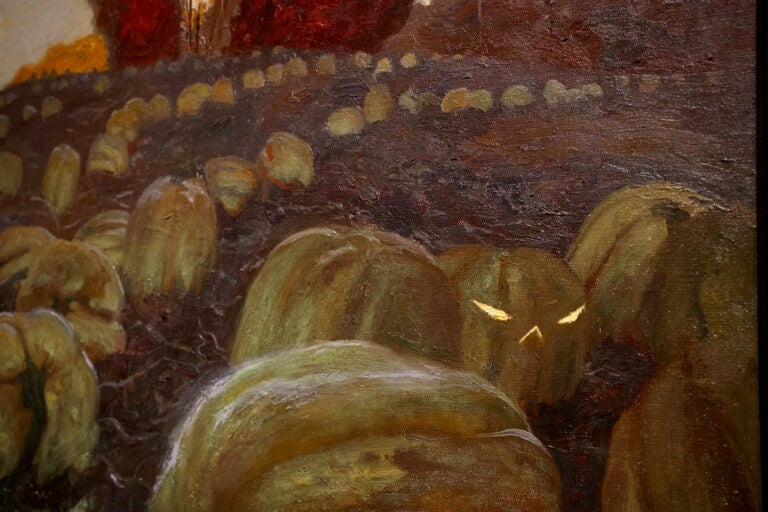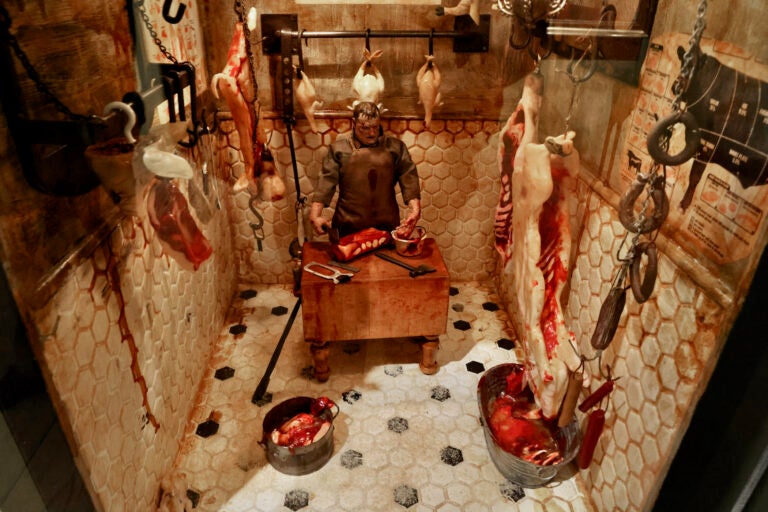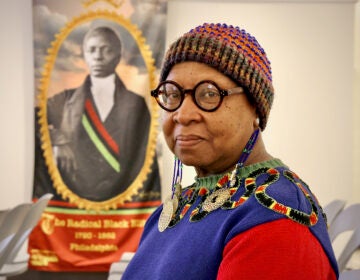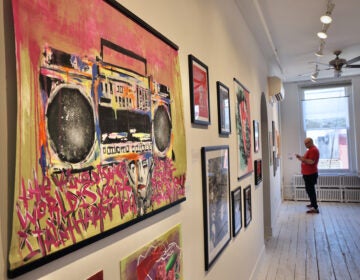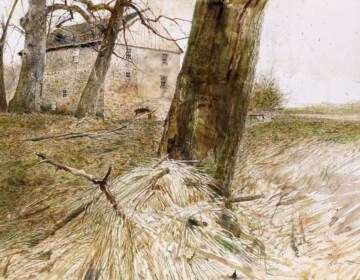Dead cats and cataracts: Jamie Wyeth is ‘Unsettled’
The artist is leaning into the strange and his anxieties about cataract surgery in a new art exhibit.
Listen 1:51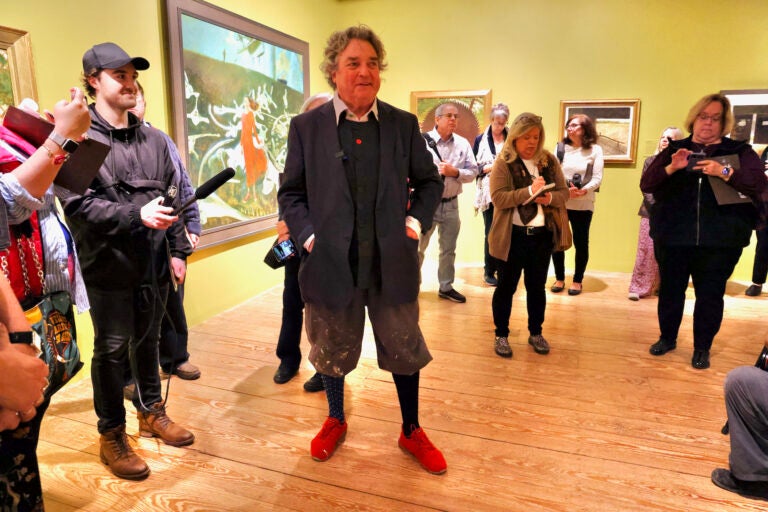
Jamie Wyeth guides members of the media through his exhibit, ''Jamie Wyeth: Unsettled,'' at the Brandywine Museum of Art. (Emma Lee/WHYY)
From Philly and the Pa. suburbs to South Jersey and Delaware, what would you like WHYY News to cover? Let us know!
“Jamie Wyeth: Unsettled,” a retrospective of mostly creepy and menacing paintings by Jamie Wyeth at the Brandywine Museum, does not start with a painting — but with a doll.
Not just a doll, but a clown. Upon entering the gallery, an animatronic clown with a dead stare is the first thing seen. Wyeth likes it because it resembles the character Pierrot Lunaire from the ballet of the same name. In the 1970s, it was performed by Rudolph Nureyev, whom Wyeth befriended and painted many times.
Next to the mechanical clown is a taxidermied dog, a terrier named Skipper, likely from the 1930s. Wyeth found it while exploring a prop shop on New York City’s West Side with Andy Warhol.
“It was full of stuffed dogs and cats,” Wyeth said. “It must have been a period in the 30s when people literally stuffed their pets.”
These uncanny curiosities, which mimic life without actually being alive, normally live in the Wyeth’s studio.
“Painting is a singular profession, and I don’t much like people around,” he said. “So this is my perfect thing.”
Wyeth says his otherworldly toys set the tone for the rest of the exhibition.
“I think there is an oddity to it, taking you into a different world,” he said. “That, to me, is what painting’s all about. Why do I spend so much time doing it alone in my studio? Obviously, I’m fascinated by creating worlds.”
Some of those worlds are disconcerting: A young boy in short pants, necktie and cape points to his handwritten sign advertising a Dead Cat Museum. Visitors can “See the cats” for 50 cents, and for another 10 cents, they can have a glass of lemonade.
The boy looks like a cross between Harry Potter and “Children of the Corn,” and he is real. “Dead Cat Museum, Monhegan Island” (1999) is based on an actual young entrepreneur on the Maine island where Wyeth lives who hustles tourists to see his collection of dead animals.
Other oddities Wyeth creates are more subtle. “Other Voices, Study #1” (1995) features a woman seen from the back as she listens through a closed door. The frame of the door is not square with the frame of the painting: It is literally off-kilter.
The retrospective spans from the 1960s when a young Wyeth was imitating the formidable style of his father Andrew to portraits done in the last few years that are built into hinged screen doors, like one depicting his grandfather harvesting apples.
Jamie is hesitant to give clear explanations for his paintings, particularly ones about the grandfather he never met. N.C. Wyeth died a year before Jamie was born.
“In one sense he loved apples and orchards and whatnot,” he said. ”But they became something much more to me than just fruit dropping down. Sort of a window into his mind.”
“Unsettled” comes on the heels of an unsettling medical procedure for Wyeth, who recently had cataract surgery on his right eye, something he worried might change his ability to paint.
“I went into this with fear and trepidation,” he said.
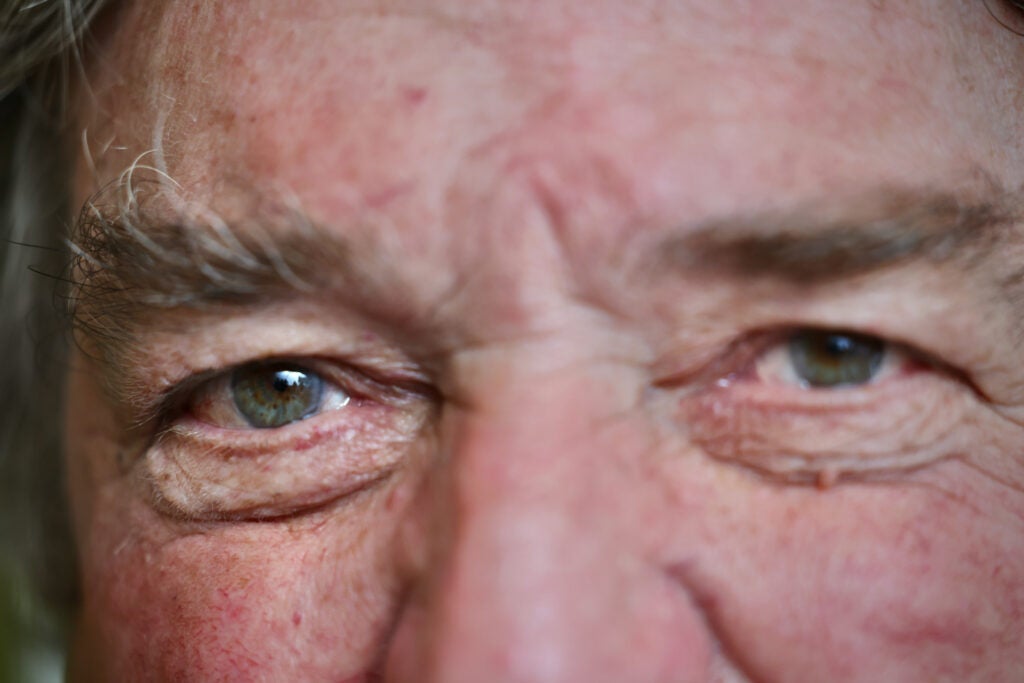
Wyeth recalled that his father, Andrew, also confronted cataract surgery and was troubled by the possibility it would change his ability to perceive in the same way.
“I remember him going through this terrible feeling: ‘Is it going to change me? Will the light be different to me?’” he recalled. “He had the surgery, and it did affect him. The things he did shortly thereafter, the brightness was really noticeable.”
Wyeth went to the same ophthalmologist who operated on his father 17 years earlier, Dr. Christopher Williams at Crozer-Chester Medical Center. Dr. Williams had been monitoring Jamie’s eyes for years, waiting for the artist to agree to a procedure.
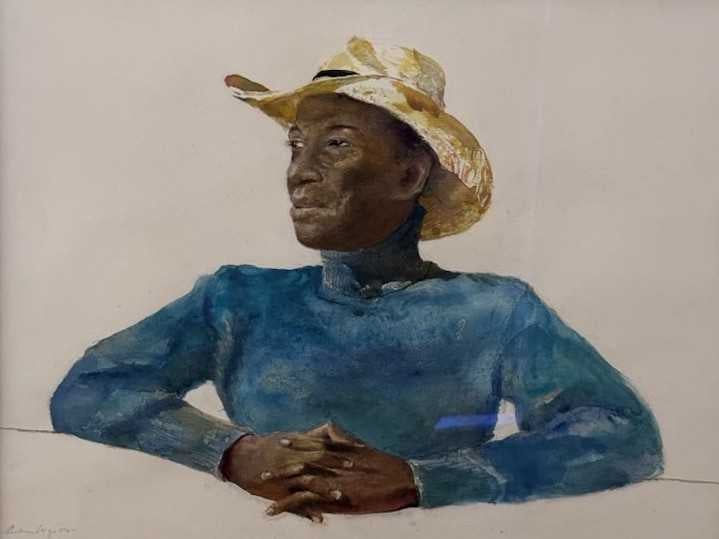
“When you’re dealing with the Wyeths, let’s just say I was quite patient and wanted to make sure he felt it was time,” Williams said. “His cataracts were over-ripe by the time he complained. You never want to encourage someone to have surgery before they’re ready, and certainly not a well-known painter like Jamie.”
Cataracts cloud the lens of the eye, causing a decrease of vision, a muting of color, or seeing objects in multiples. Williams said Jamie was experiencing all three in his right eye.
Williams said Andrew Wyeth’s cataracts were even worse, and he was older than Jamie is now. Andrew had the surgery at age 89. He died two years later.
The procedure was essentially the same from father to son: A small incision is made in the eye to remove the cloudy material and replace it with a clear lens. Newer laser techniques make the surgery more precise.
After the surgery, Williams said he became a friend of the Wyeth family, often spending time at the house in Chadds Ford. The first watercolor Andrew made post-surgery, he gifted to Williams.
“At some of the hardest times in my life, I would call Andy and just ask if we could talk. Regardless of what he was doing he would say, ‘Be here in 30 minutes,’” he said. “The Wyeth family has changed my life.”
Jamie’s cataract surgery was so recent, there are no post-surgery paintings on view in “Unsettled.” He said his vision has gotten noticeably brighter, but his eyes and how they perceive are not the chief tools of his artistic practice.
“There’s always talk about painters: Is the way they paint affected by their physical attribution, their eyes?” he said. “But so much is done in your mind. I paint more in my bed and in dreams than I do actually sitting at an easel.”
Wyeth keeps a notebook next to his bed so he can quickly draw what he sees in dreams. In the mornings he sometimes awakes to find notebook paper scattered around with indecipherable scribbles.
“They’re all kind of hieroglyphics. You really can’t tell what the hell it is,” he said. “Then I have the fascinating time to figure out: ‘What was I thinking of?’ A lot of paintings have come out of that process.”
“Jamie Wyeth: Unsettled” will be on view at the Brandywine until June 9. The exhibition then travels to the Farnsworth Museum in Maine, and then onto other museums across the country.

Get daily updates from WHYY News!
WHYY is your source for fact-based, in-depth journalism and information. As a nonprofit organization, we rely on financial support from readers like you. Please give today.



